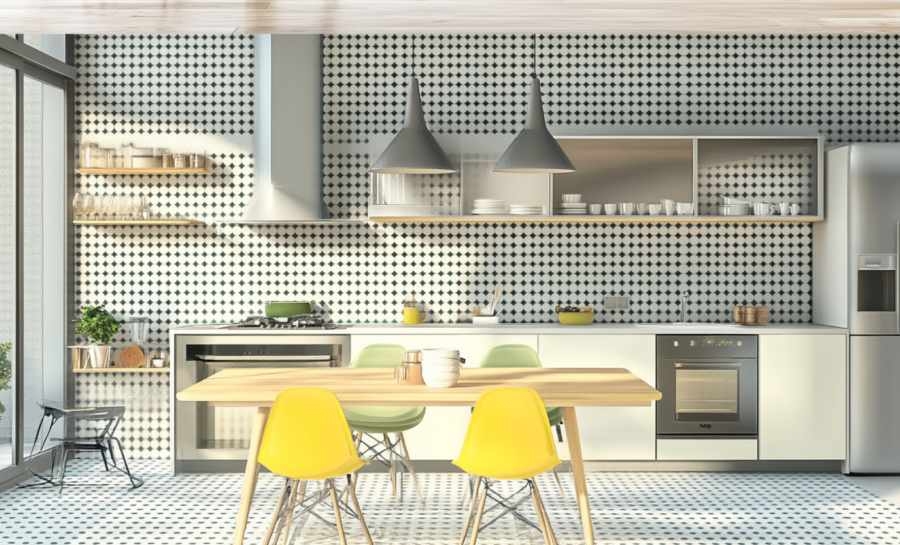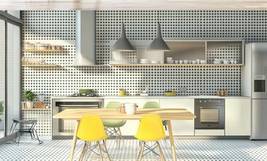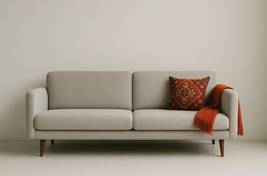Bringing Peace to Kitchens That Love Overreacting
 A spoon clattering on a countertop shouldn’t sound like a minor geological event, yet many kitchens seem determined to imitate one. In open-plan homes, noise loves to sprint across the space, bounce off every surface, and interrupt even the most innocent conversation. Taming that chaos is entirely possible, though it does require a strategic blend of materials, layout decisions, and the occasional tiny tweak that feels suspiciously like wizardry.
A spoon clattering on a countertop shouldn’t sound like a minor geological event, yet many kitchens seem determined to imitate one. In open-plan homes, noise loves to sprint across the space, bounce off every surface, and interrupt even the most innocent conversation. Taming that chaos is entirely possible, though it does require a strategic blend of materials, layout decisions, and the occasional tiny tweak that feels suspiciously like wizardry.
Surfaces That Actually Behave
Hard, shiny materials can turn a kitchen into an echo chamber worthy of its own reverb pedal. Swapping or supplementing these surfaces with softer, more absorbent options helps hush the environment dramatically. Countertops made of composite materials, floors with subtle cushioning, and wall treatments that aren’t basically polished megaphones all work wonders.
Fabric elements are equally powerful. Think seat cushions, discreet wall-mounted panels, or even window coverings that don’t resemble medieval armor. They can soften impact noise, reduce reflections, and subtly calm the whole atmosphere without ruining the clean, modern aesthetic. You don’t have to transform your kitchen into a cozy cabin; even modest doses of softness help.
Layout Games That Pay Off
A kitchen’s internal geography dictates how sound moves. Appliances crammed into one echo-prone zone can create what might charitably be described as an enthusiastic roar. Spreading them out logically—and giving the noisiest culprits a bit of personal space—helps prevent sound clusters.
Adding an island or a peninsula can interrupt direct sound paths. These features act as gentle barriers, reducing the distance noise travels and the amount of open air it can exploit. They also offer bonus countertop real estate for chopping vegetables without announcing each cut like a percussion audition.
Open-plan homes especially benefit from partial dividers or strategically placed shelving. Even a well-chosen rack of cookbooks can deflect sound enough to spare your living area from unintended audio intrusions.
Quieting the Usual Suspects
Some gadgets simply enjoy being loud. While counseling them is rarely effective, choosing quieter models is surprisingly easy thanks to updated decibel ratings. Swapping out the worst offenders—vent hoods that howl, dishwashers that grumble, refrigerators that mutter ominously at 2 a.m.—can dramatically shift the overall soundscape.
Small modifications also matter. Rubber feet under small appliances, anti-vibration mats under washing machines, and felt pads on cabinet doors all help reduce clatter. They’re inexpensive, quick to install, and wonderfully satisfying in a “why didn’t I do this years ago?” kind of way.
Micro-Design Tweaks With Outsized Impact
Not every improvement requires a major renovation. Some victories come from deceptively small adjustments. Swapping metal mixing bowls for quieter composite ones reduces the clang factor considerably. Even relocating your utensil drawer so it’s farther from shared living areas can make late-night snacking less like a broadcast event.
Cabinet interiors lined with thin acoustic material can soften the thud of dishes being stacked. It’s a stealthy change—no visual disruption, no heavy-handed design moves—just calmer acoustics every time someone unloads the dishwasher. Drawer organizers help too; cutlery no longer rattles around like it’s trying to escape.
Lighting fixtures also have a role to play. Pendant lights with fabric or perforated shades absorb and scatter sound more effectively than sleek metal domes. You’re not just choosing illumination; you’re secretly recruiting noise control agents that happen to look nice.
Integrating Style With Sound Strategy
A modern kitchen can stay stylish while becoming quieter. Open shelving, for example, can be paired with textured items—baskets, matte ceramics, even cookbooks—to absorb and diffuse sound. These subtle choices accumulate into a noticeably calmer space without sacrificing aesthetics.
Plants deserve their own shoutout. They’re low-maintenance, good-looking, and surprisingly helpful in disrupting sound reflections. A leafy barrier near the edge of the kitchen can keep noise from stampeding directly into the living room. It’s a small jungle with big aspirations.
Rugs, runners, and mats might seem like obvious solutions, but they’re powerful nonetheless. A single well-placed runner along the primary prep area can significantly soften footfall and utensil noise. Choose something with a bit of cushioning instead of the decorative-but-useless types that seem to exist solely to slip out from under you.
Stirring Up Peace One Detail at a Time
Real acoustic calm doesn’t come from a single dramatic overhaul. It’s more of a steady layering of smart choices: softer materials here, barrier elements there, quieter appliances humming politely in the background. Each tweak chips away at the chaotic energy that often defines open kitchens.
A quieter kitchen also encourages better conversation. When the blender no longer drowns out every syllable, people linger comfortably. The space becomes a place to gather rather than a sonic obstacle course. It’s amazing how much more welcoming a room feels when it isn’t bellowing at you.
Serving Silence With a Side of Style
Noise isn’t an inevitable tax on modern living. With thoughtful design and a little persistence, even the most unruly kitchen can be tamed. Soft surfaces, smart layouts, strategic accessories, and discreet modifications work together to dial down the clatter without draining personality from the space. You’re not just creating a better room; you’re cultivating a calmer daily experience.
And if anyone asks how you pulled it off, feel free to claim you mastered the rare art of domestic sound-bending. After all, a kitchen this peaceful deserves a touch of mystique.
|
|



 A spoon clattering on a countertop shouldn’t sound like a minor geological event, yet many kitchens seem determined to imitate one. In open-plan homes, noise loves to sprint across the space, bounce off every surface, and interrupt even the most innocent conversation. Taming that chaos is entirely possible, though it does require a strategic blend of materials, layout decisions, and the occasional tiny tweak that feels suspiciously like wizardry.
A spoon clattering on a countertop shouldn’t sound like a minor geological event, yet many kitchens seem determined to imitate one. In open-plan homes, noise loves to sprint across the space, bounce off every surface, and interrupt even the most innocent conversation. Taming that chaos is entirely possible, though it does require a strategic blend of materials, layout decisions, and the occasional tiny tweak that feels suspiciously like wizardry.